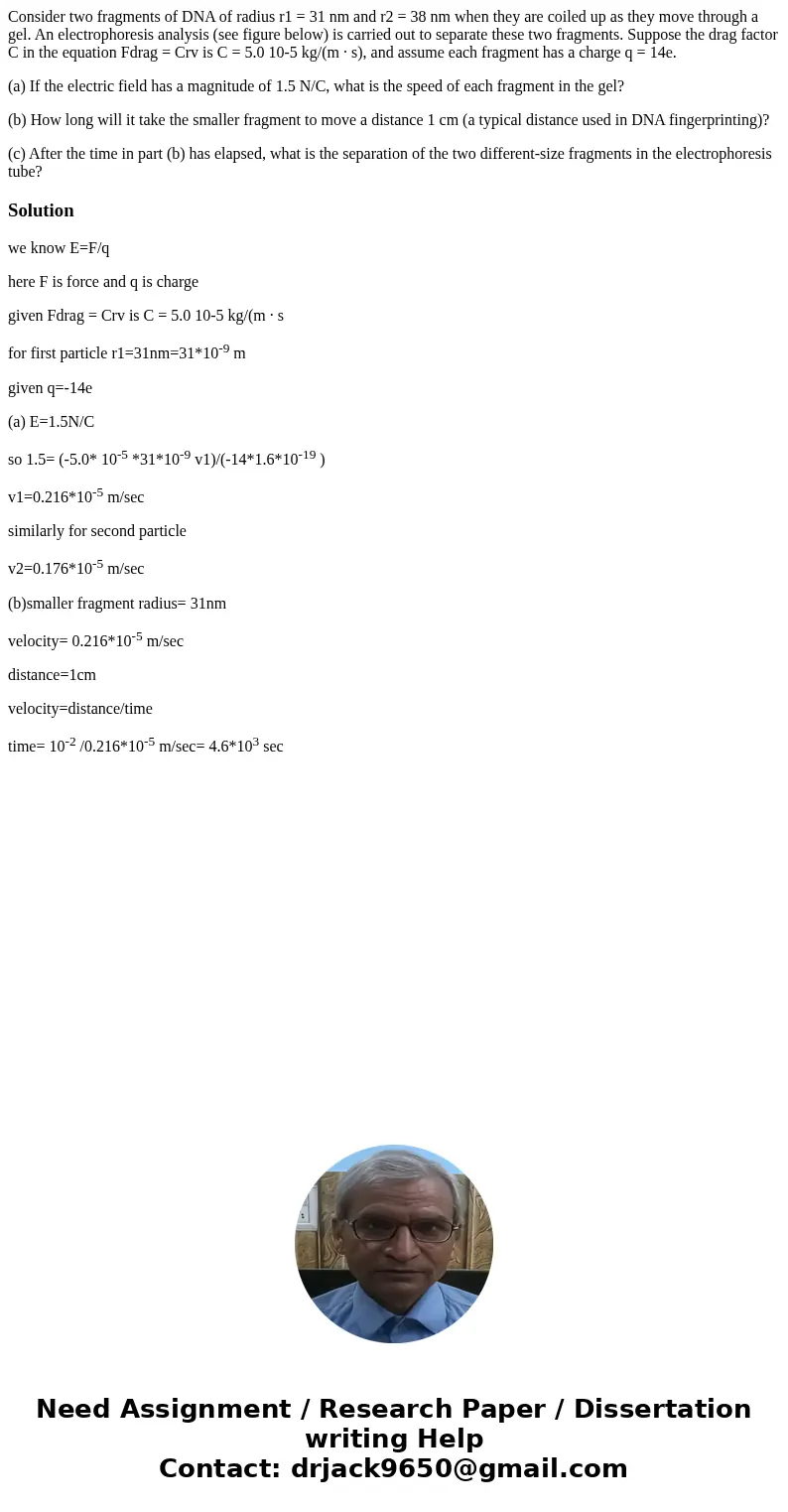Consider two fragments of DNA of radius r1 31 nm and r2 38
Consider two fragments of DNA of radius r1 = 31 nm and r2 = 38 nm when they are coiled up as they move through a gel. An electrophoresis analysis (see figure below) is carried out to separate these two fragments. Suppose the drag factor C in the equation Fdrag = Crv is C = 5.0 10-5 kg/(m · s), and assume each fragment has a charge q = 14e.
(a) If the electric field has a magnitude of 1.5 N/C, what is the speed of each fragment in the gel?
(b) How long will it take the smaller fragment to move a distance 1 cm (a typical distance used in DNA fingerprinting)?
(c) After the time in part (b) has elapsed, what is the separation of the two different-size fragments in the electrophoresis tube?
Solution
we know E=F/q
here F is force and q is charge
given Fdrag = Crv is C = 5.0 10-5 kg/(m · s
for first particle r1=31nm=31*10-9 m
given q=-14e
(a) E=1.5N/C
so 1.5= (-5.0* 10-5 *31*10-9 v1)/(-14*1.6*10-19 )
v1=0.216*10-5 m/sec
similarly for second particle
v2=0.176*10-5 m/sec
(b)smaller fragment radius= 31nm
velocity= 0.216*10-5 m/sec
distance=1cm
velocity=distance/time
time= 10-2 /0.216*10-5 m/sec= 4.6*103 sec

 Homework Sourse
Homework Sourse